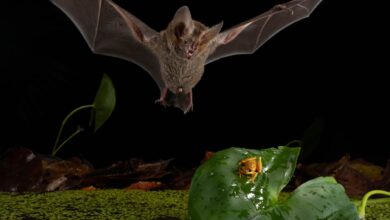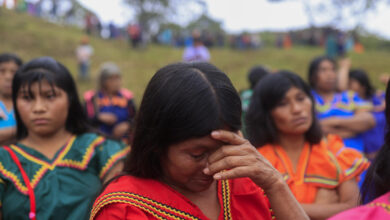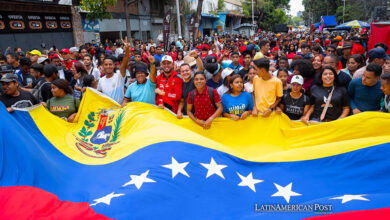Panama Unveils Darién’s Odyssey in Artistic Global Dialog

Panama’s historic debut at the 2024 Venice Biennale spotlights the harrowing trek through the Darién jungle—a route hundreds of migrants brave daily. By showcasing four Panamanian artists, the exhibit confronts both local audiences and global visitors with the stark realities of transit and survival.
A Bridge in Flux: Art and Migration in Latin America
Latin American art has long shown that cultural identity is mixed with social problems. Paintings from the 1800s presented battles for independence. Murals in the middle 1900s criticized unfair treatment. Art became a method to pose challenging questions regarding who people are, the use of power, and acceptance into society. Mexican muralists gained fame in the 1920s plus 1930s. They represented worker conflicts in artworks. But in Chile and Argentina, artists faced censorship. They created paintings or gave performances containing hidden messages about human rights under strict governments.
Panama decided to take part in the Venice Biennale. The decision concerns how art once mirrored society. Over the centuries, the isthmus has symbolized commerce and connectivity, best exemplified by the transoceanic canal reconfiguring global trade in 1914. Yet that role as a “bridge of the world” stands in jarring contrast to the ongoing flow of desperate travelers crossing the Darién, often with little safety or recognition. This dissonance between celebrated commerce and neglected human passage invites reflection: how can a country that profits from bridging oceans also contain one of the harshest migrant routes in the hemisphere?
The new exhibit captures that tension by casting a light on the migration crisis in the Darién Gap, a perilous corridor of dense jungle. Through installations ranging from collages to immersive soundscapes, the four Panamanian artists give form to a subject that remains relegated to policy briefs or fleeting headlines. The message is unmistakable: in an age when Latin American modern art thrives on themes of identity and protest, Panama’s pivot to amplify the Darién crossing reaffirms that creativity can champion the vulnerable where governments hesitate.
Genesis of Panama’s First Venice Appearance
According to statements provided to EFE by co-curator and Museo del Canal director Ana Elizabeth González, the impetus for Panama’s Biennale debut began with a nagging question: why had her country never sent a pavilion to one of the world’s premier art exhibitions? While searching for a unifying theme, González noted how the forthcoming 60th Biennale would address Extranjeros en todas partes (“Foreigners Everywhere”). Immediately, the grim saga of the Darién Gap surfaced as a poignant local fit—particularly given how thousands of migrants pass through that treacherous jungle each year, many bound for North America.
“For me, it felt ironic,” González told EFE, “that we promote ourselves as a transit hub—’ bridge of the world’—yet the human side of this transit, the tragic side, was rarely acknowledged.” This disparity weighed on her mind. “It kept me up at night,” she admitted. Despite curating exhibitions on everything from canal construction to Panamanian independence, she had never attempted anything so politically charged. But the resonance with the Biennale’s broader motif emboldened her to move forward.
The resulting show, once displayed in Venice, returned triumphantly to the Museo del Canal in Panama City, where it reopened for local audiences. Each of the four participating artists approached the theme of migration from a unique angle, weaving memories of personal or family displacement with a broader critique of how the isthmus positions itself in the global narrative. The synergy between their works underscores Latin America’s enduring tradition of social commentary through art—a tradition that extends from Mexico’s Orozco and Rivera to Colombia’s Beatriz González and beyond.
Four Artists, One Resonant Message
The first piece visitors encounter is a monumental clay mural by artist Cisco Merel. He told EFE that he gathered the clay directly from the Darién jungle, forging what he describes as “a terrain where all these stories and problems converge, particularly migration.” Using bold streaks of white and yellow across a cracked brown surface, Merel conjures an impression of a rough, infinite path. He described it as entering the uncertain. Migrants walk ahead without assurances – they only have hope. Soil fractures suggest injuries. This represents the physical and emotional cost the Darién crossing inflicts.
In a second gallery, artist Giana De Dier draws upon her Afro-Caribbean heritage to comment on the lesser-known waves of migration that shaped Panama, particularly during the building of the canal in the early 1900s. Using birth certificates, fragments of family photos, and official documents, De Dier’s collages recount her forebears’ journey from Barbados and Saint Lucia to Panama, where they confronted segregated “canal zones” brimming with racism. “It’s about thinking what someone decides to pack when leaving home,” she told EFE, “and how they cope with arriving in a land that doesn’t embrace them.” Her grandmother’s narratives mesh with broader critiques of how construction projects historically exploited foreign labor.
A third artist, Brooke Alfaro, was inspired by the surreal worlds conjured by Pieter Bruegel and Hieronymus Bosch. In his flamboyant paintings, half-naked figures crowd onto boats in dreamlike postures. “I start with a broad idea, but let the canvas guide me,” he told EFE. Over time, the images coalesced into reflections on migration, metaphorically referring to how precarious water journeys echo centuries of global displacement. Alfaro sees his approach continuing the Latin American tradition that merges Old World aesthetic influences with local socio-political concerns. “I try to make the viewer confront the drama of overlooked populations,” he explained, “and that naturally includes the theme of crossing.”
Finally, Isabel de Obaldía’s immersive installation draws viewers into a dense rainforest. The flutter of birds and insect drones fill the air while silhouettes of dismembered bodies hang overhead—unsettling yet mesmerizing. “How many never made it out of that jungle?” she wondered in an interview with EFE. For years, she had researched the Darién migrant experience, traveling to the region to witness the living conditions and talk briefly with travelers. The suspended torsos represent individuals the jungle swallowed physically and symbolically. Some figures resemble gladiators pushing on; dark vines consume others. “It’s about imagining what they endure,” she reflected.
Art as Latin America’s Conscience
Historically, the region has often used creative channels to expose social and political tensions. During colonial times, indigenous artisans embedded subversive details in Catholic iconography to maintain their ancestral narratives. In the 19th century, costumbrista paintings recorded daily life with subtle hints at inequality. By the 20th century, towering murals, rebellious street art, and conceptual installations prodded the public to interrogate state power, class disparities, and the aftershocks of foreign intervention.
In essence, the four Panamanian installations at the Venice Biennale, now displayed in the Museo del Canal, follow this lineage of art as the public conscience. They do not simply lament the migrants’ plight; they also challenge a country to reconcile its polished self-image with the reality at its doorsteps. By highlighting the crossing of the Darién Gap, the exhibit recasts Panama from a commercial “bridge” to a humanitarian puzzle, urging visitors to empathize with the silent footsteps weaving through snake-infested terrain.
As curator Ana Elizabeth González sees it, shedding light on migration is not about offering quick solutions but fostering communal recognition. “We often praise our canal’s commercial success,” she said, “but remain willfully blind to the human drama in the same corridor.” The exhibit will have served its purpose if it urges even a fraction of attendees to reflect on how national identity intersects with foreign labor or displaced people.
Meanwhile, the show’s resonance extends beyond Panama. Observers across Latin America have long recognized that existential themes—colonization, diaspora, labor, and yearning—transcend borders. In Surrealist canvases from Buenos Aires or wood carvings from Oaxaca, one repeatedly encounters migrations forced by war, dictatorship, or economic despair. The Panamanian experience thus fits seamlessly into a broader tapestry where art documents and dignifies marginalized communities.
EFE interviews with the four featured artists reveal how they have embraced tradition while reimagining it. Merel used clay, De Dier put together collages, Alfaro created surreal works, and De Obaldía provided forest immersion. Each approached a shared past of confronting unsettling realities. The exhibition looks directly at matters like the canal’s building history, or the current troubles people face moving from place to place. De Dier stated, “We show things as they are. The images have an impact because the actual situation is severe.”
Ultimately, this national pavilion signals that Panama’s cultural voice has matured and is ready to join a global conversation about belonging and displacement. Venice’s Biennale offered the perfect stage, but bringing the exhibit home ensures that the region that inspired it can engage directly with its message. To those nearby, it repeats that art is not just pretty. It also faces complex global issues. It also confirms for Latin America, art can develop understanding plus responsibility. However, for each migrant moving through the Darién Gap, the work means someone notices them.
Also Read: Colombia’s Ovy On Drums Reshapes Global Pop Vibrancy
Their experiences are essential. Surrounded by layered clay or swirling green vines on a gallery wall, their trials become impossible to ignore. The exhibit’s hope lies in making that empathy more profound and enduring so that the “bridge of the world” conjures compassion as readily as commerce. As the last visitors exit, they may carry a vivid awareness that real human journeys press on behind every shipping route or scenic photo of jungle fauna—sometimes in triumph, often in heartbreak, and always worthy of a witness.





